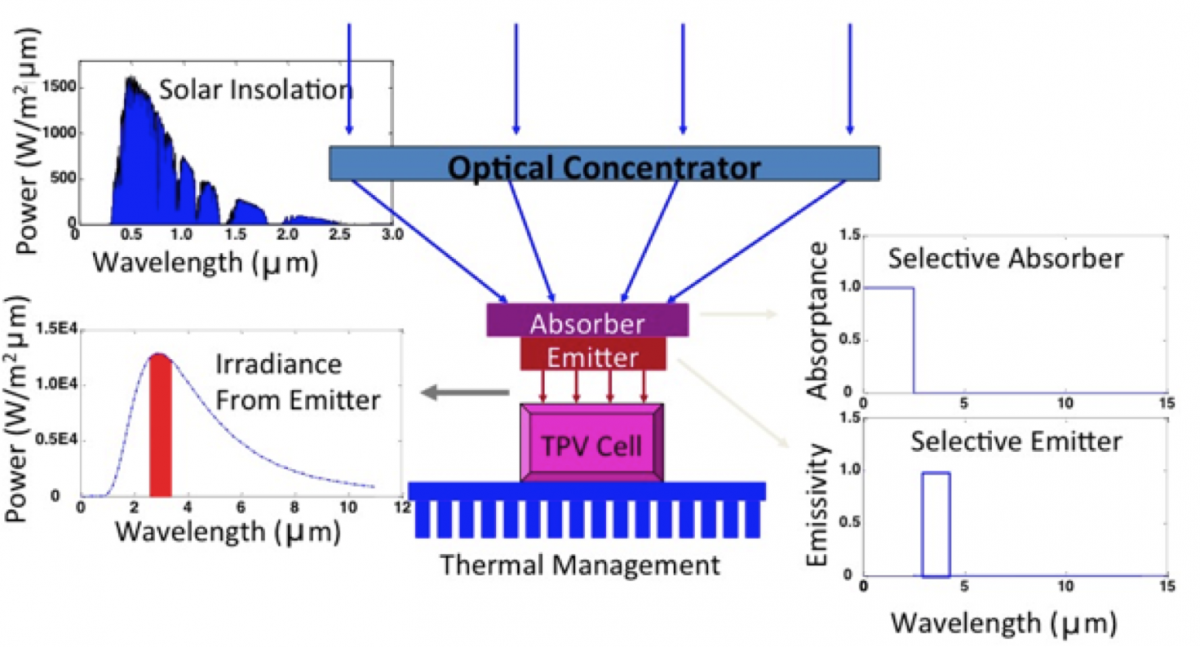Solar Thermophotovoltaics (STPVs) are solar driven heat engines which extract electrical power from thermal radiation. The overall goal is to absorb and convert the broadband solar radiation spectrum into a narrowband thermal emission spectrum tuned to the spectral response of a photovoltaic cell (PV) [1]. STPVs are of significant interest as they have the potential to overcome the well-known Shockley-Queisser limit for single junction PV given sufficient spectral control. STPVs are highly scalable for a wide range of power capacities, they have no moving parts, and they allow for solar energy storage and the use of alternate fuels to generate continuous, dispatchable power.

For solar TPV, critical design objective is to minimize the heat loss from the hot absorber and emitter that must operate at high temperatures (> 1300 K) so that photons emitted have enough energy. Our research investigates the design and integration of different material science and photonic principles to understand and improve the energy conversion mechanisms. High degree of spectral control between the emitter and the PV can be accomplished using photonic crystals on the thermal emitter or cold-side high-pass optical filters. Demonstrated STPV conversion efficiencies have increased an order of magnitude in the past few years due to the successfully integration of nanophotonic principles to working devices. Performances are expected to continue to improve as STPVs move closer towards commercialization.
S3TEC is also actively investigating fundamental properties of light, and seeking innovative applications based on the funamental understanding. We have experimentally demonstrated a broadband angular-selective filter[2], theoretically predicted[3] and experimentally verified[4] the existence of Weyl points in gyroid photonic crystals, experimentally illustrated the evolution of a photonic Dirac cone into an exceptional ring when proper loss is introduced[5], and experimentally shown how incandescent bulbs can compete with LEDs when combined with a photonic-crystal-based infrared filter[6].
Reference:
1. A. Lenert et al., A nanophotonic solar thermophotovoltaic device, Nature Nanotechnology, 9, 126 (2013)
2. Y.C. Shen et al., Optical broadband angular selectiviey, Science, 343, 1499 (2014)
3. L. Lu et al., Weyl points and line nodes in gyroid photonic crystals, Nature Photonics, 7, 294 (2013)
4. L. Lu et al., Experimental observation of Weyl points, Science, 349, 622 (2015)
5. B. Zhen et al., Spawning rings of exceptional points out of Dirac cones, Nature, 525, 354 (2015)
6. O. Ilic et al., Tailoring high-temperature radiation and the resurrection of the incandescent source, Nature Nanotechnology, advance online (2016)

